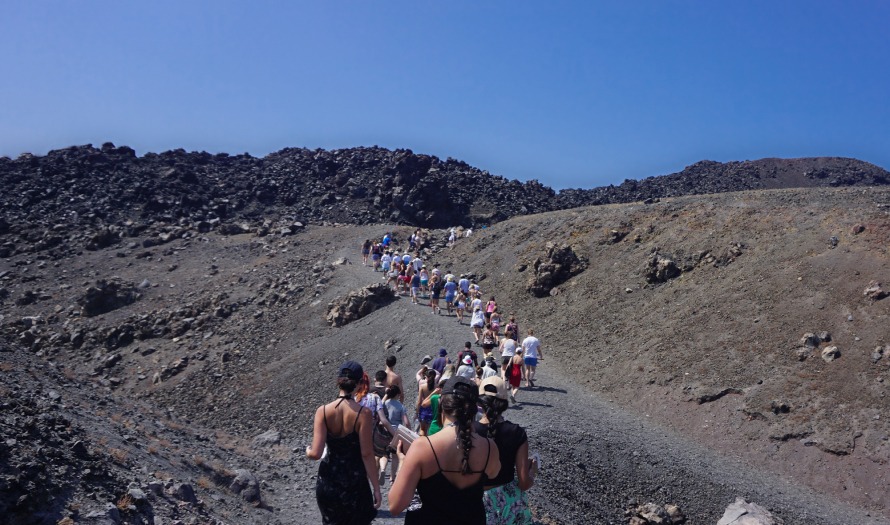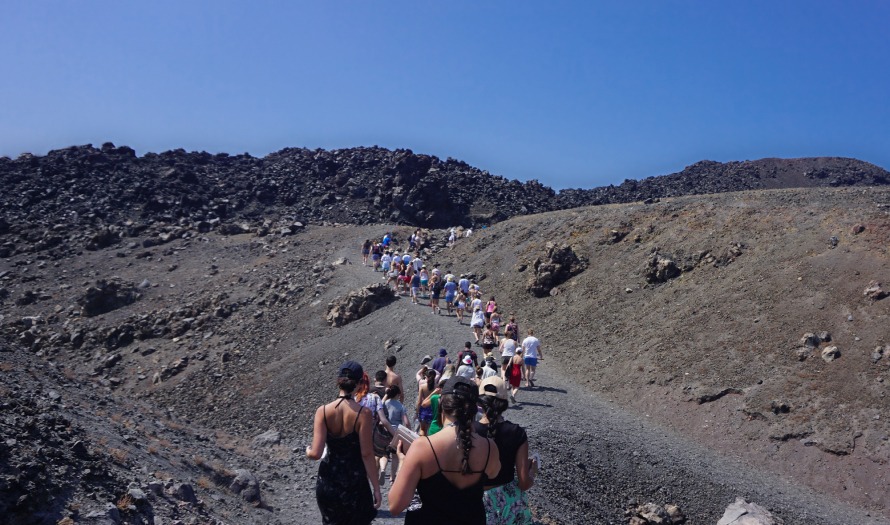The famous reference to ancient Atlantis, which sank about 9,500 years ago, in Plato’s works Timaeus and Critias has initiated a global search and led to the formulation of numerous theories concerning the geographic location of the mythical empire.
More than 200 sites throughout the planet claim to be the lost Atlantis. Among them Atlas Mountains in the Sahara Desert, the Sous-Massa-Draa region in southern Morocco, the Meroe region in northern Sudan, the Indus River Valley, Antarctica, the island of Lesvos (off Plomari), Sherbro Island off Sierra Leone and others.
Santorini, however, is considered by many the most likely site of Atlantis, due to the volcanic eruption that caused a large part of the original island to sink.
According to Antonis Kontaratos, in 1966, a research team under Professor A. Galanopoulos and American oceanographer-engineer J. Mavor visited Santorini in order to collect data in support of the former’s theory, which equates Atlantis with Santorini. The oceanographic vessel Chain was used, belonging to the Woods Hole Oceanographic Institution, which recorded two morphological craters on the seabed inside the Theran Caldera and ascertained the absence of tectonic ash in the linear expanse between the islands Thera-Nea Kameni-Therassia. Along the coastline and in the hinterland, the research was confined to geological observations and topographic surveys. Their findings were published in international journals adapted to a lay audience and received wide popular acclaim. Basically, they correlated Atlantis with Santorini, based on geological and mythological data, as well as historical sources (Egyptian scrolls, Old Testament).
In 2003, the Hellenic Centre for Marine Research (HCMR), using private funds, conducted research in the area west of Santorini looking for any remains of ancient Atlantis. Results have shown that, even if there is some historical truth in the association, evidence is very hard to find on the seabed, due to the thickness of volcanic deposits.
Research covered an area of 25 sq. km. Sonar exploration revealed certain geometrical features in linear arrangement, at an average water depth of 115 meters and a level area of 4.5 sq. km. And one more clue: there is no reference of Atlantis in the works of Homer, Hesiod, Herodotus, Thucydides, and Aristotle; only Plato mentions it.
info
- The myth of the ideal city called Atlantis has had a strong influence on the work of thinkers, such as Francis Bacon (The New Atlantis) and Thomas More (Utopia).
- ItaIian researcher Luana Monte, identifies Atlantis with the Minoan civilization, suggesting that Plato actually tells the story of the war between Athens and Crete in the Bronze Age.


